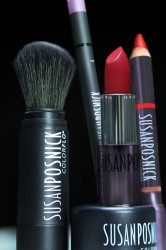Maximising the Lipstick Effect: Journalists, PRs and the Blogosphere
Worth over £15 billion in the UK alone, the beauty industry is big business. Blame it on the lipstick effect if you like, but the recession hasn’t stopped women from spending, with the industry seeing steady growth each year. So as a PR, how do you influence buyer behaviour and generate that all-important buzz about your product?
 Once upon a time, sending out a press release or inviting journalists to a launch might have sufficed. But as any PR worth their column inches will tell you, these days you ignore the power of the blogosphere at your peril. ‘They’ve never been as influential as they are now – the successful ones are so quick off the mark. They have huge numbers following them,’ says Katy Young, The Telegraph’s online beauty editor. But does a one-size-fits-all approach work when it comes to bloggers and journalists? Or do agencies need to create distinct strategies to work with the old and new worlds of media – print and digital?
Once upon a time, sending out a press release or inviting journalists to a launch might have sufficed. But as any PR worth their column inches will tell you, these days you ignore the power of the blogosphere at your peril. ‘They’ve never been as influential as they are now – the successful ones are so quick off the mark. They have huge numbers following them,’ says Katy Young, The Telegraph’s online beauty editor. But does a one-size-fits-all approach work when it comes to bloggers and journalists? Or do agencies need to create distinct strategies to work with the old and new worlds of media – print and digital?
‘With both bloggers and journalists, it’s about building a relationship. The more time you invest in that relationship the better,’ says The Communications Store‘s digital director, Simon Sanett. And in many ways, communicating with a blogger can be much simpler than with a print or digital publication. ‘A beauty journalist will always have an editor or a media buyer to answer to,’ explains Hayley Carr – better known as blogger, London Beauty Queen.
An independent voice
The personal reviews and lengthy, product-centric posts you can expect on beauty blogs are quite, quite different to the features and editorials you’ll typically find in any glossy magazine; the blogosphere’s independence is what tends to draw readers in the first place. Lynne Thomas, director of specialist health and beauty PR agency Flipside PR, agrees with Carr: ‘We find working with bloggers can be more rewarding because they are not restricted in the same way as traditional media. Bloggers have a genuine interest in products and because they post multiple times, they have a thirst for news and knowledge.’
However, beyond their own relationship with a blogger or journalist, PRs should also consider a writer’s engagement with their readers. ‘Print coverage is about reach. Blog coverage is about engagement with an audience,’ says Sanett. The buzz generated about a product or brand by a journalist and by a blogger is as different as their editorial styles. Whereas a journalist covers the latest products to inform their readers, for a blogger it is often the starting point for a conversation.
For most, blogging isn’t a paid occupation; bloggers are writing about something they feel genuinely passionate about, meaning that their interest is personal rather than professional. One blog post can result in a flurry of comments or a quick-fire discussion on Twitter – and we all know the power of social media influence. The fact that PRs can track the digital dialogue around a product is an added bonus.

Hayley Carr, London Beauty Blogger
The strategic schedule
The call of the journalist on deadline is one familiar to most agencies, but timeliness is key for bloggers too: ‘I only want to bring news and information when it’s relevant and my readers can get their hands on it. I like to be able to provide a link to buy straight away, or at least provide a very close date of launch,’ explains Carr. Bloggers may find that an invite to a product launch they can’t tell their followers about or cover on their blog is just as frustrating as missing a deadline.
‘It’s really all about creating good quality content,’ says Sanett. Whether you’re working with journalists or bloggers, the oft-repeated adage of ‘content is king’ still rings true.
Founder of online magazine Running in Heels, Alice Revel is a freelance writer and consultant contributing to titles including the Telegraph, Woman’s Hour and Civilian Global. Journalist contacts and digital outlets can be found in the CisionPoint Media Database.


Leave a Comment